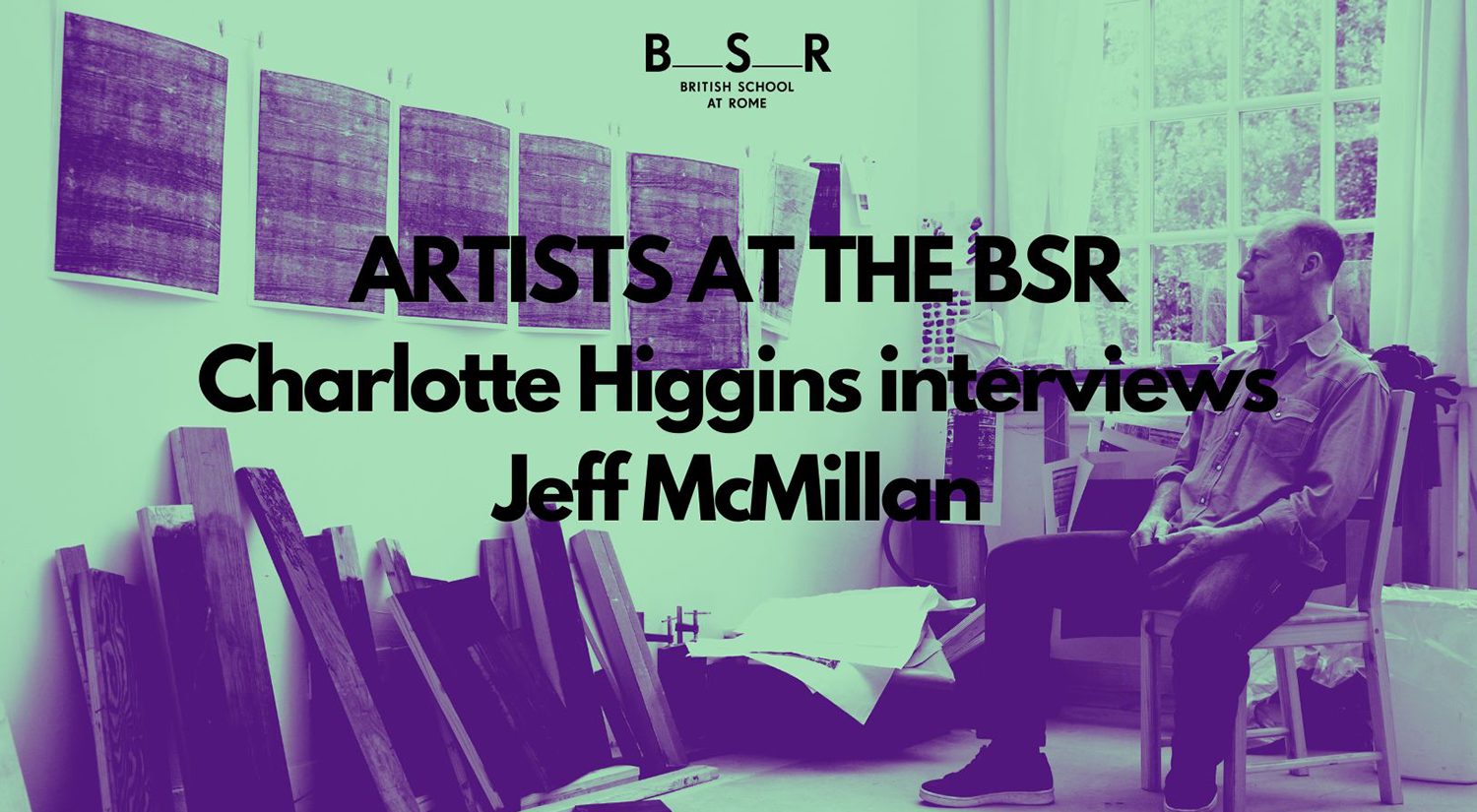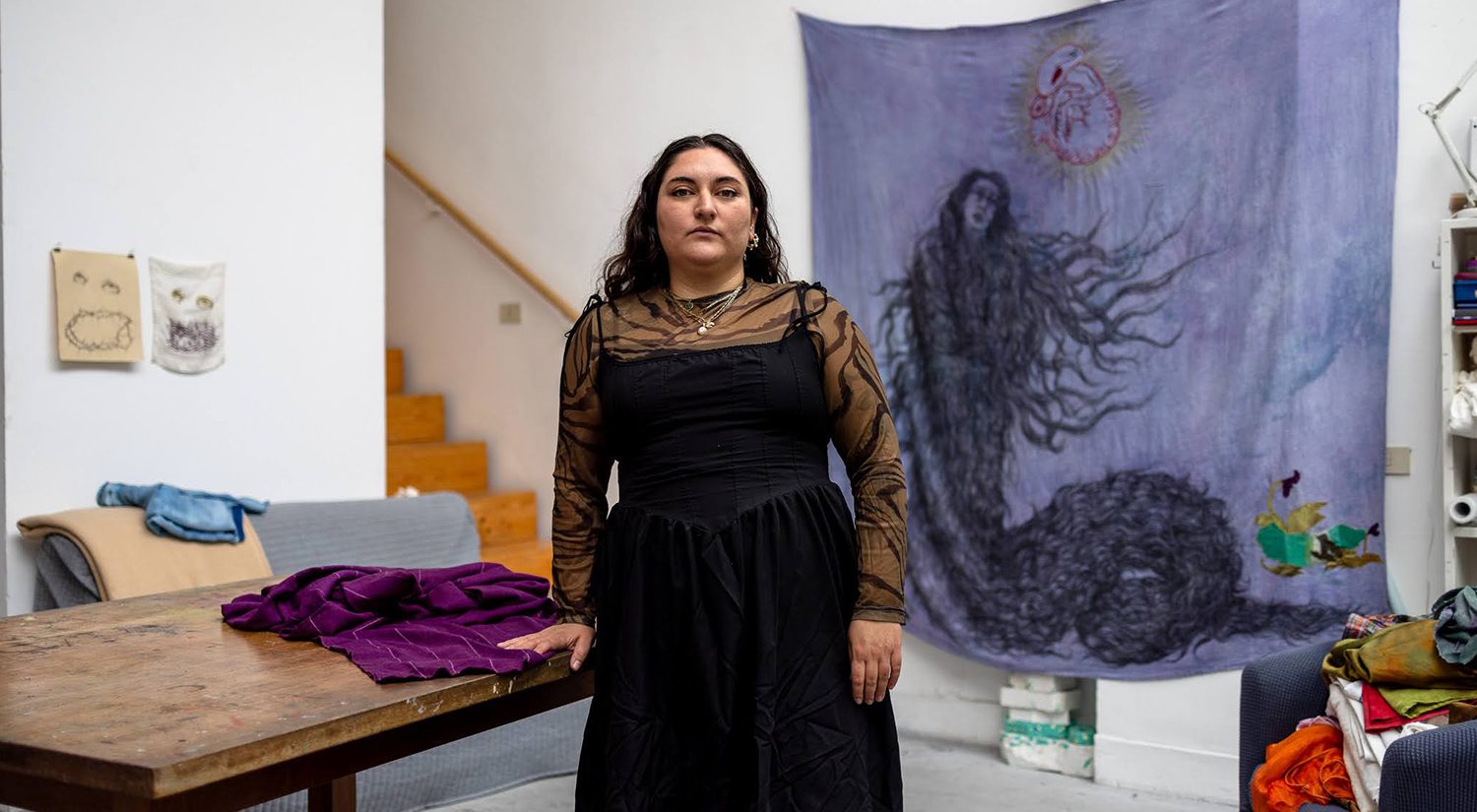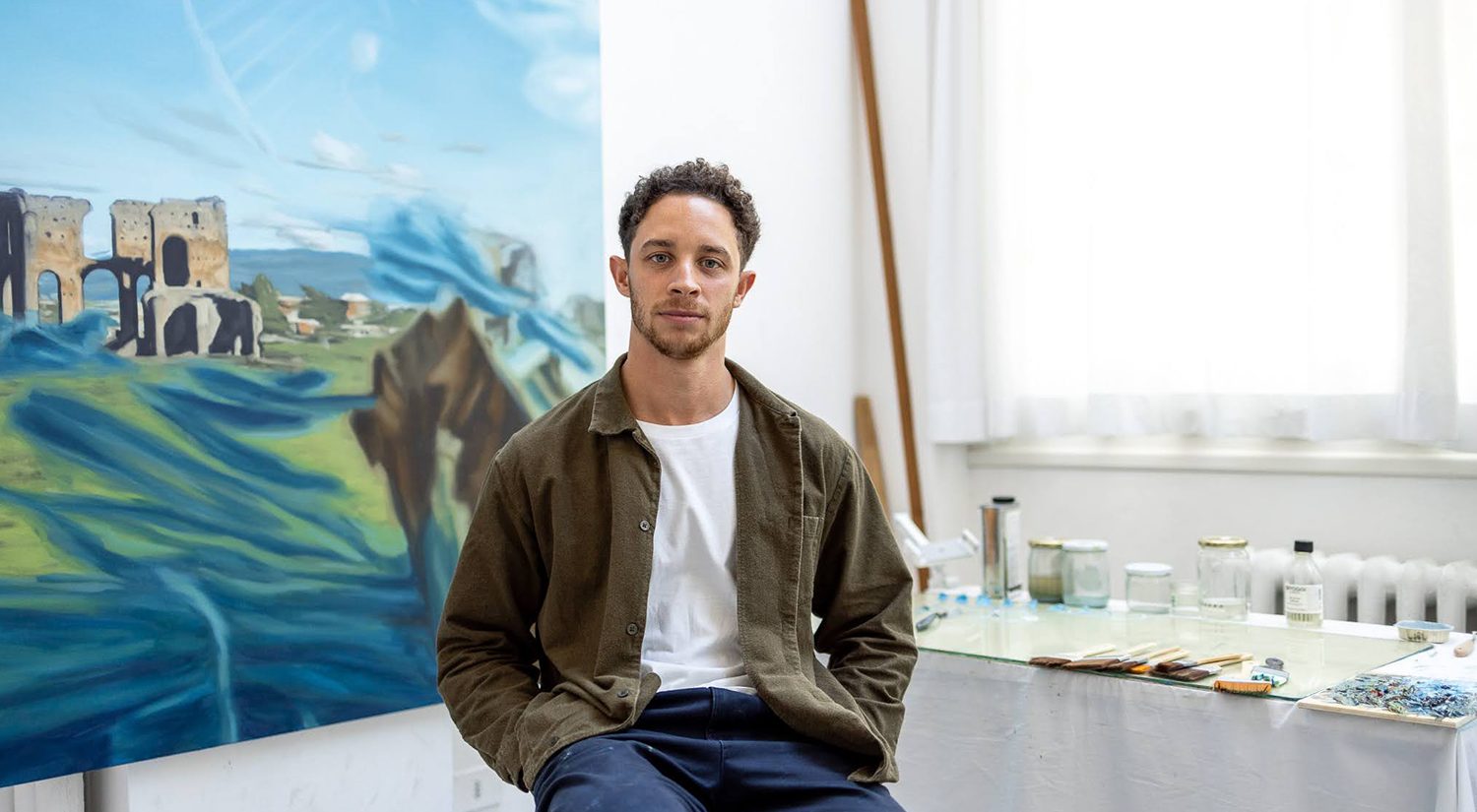An interview with Kerstin Kartscher, Bridget Riley Fellow, in which she speaks about the work she has produced during her residency at the BSR from September – November 2023, ahead of the Winter Open Studios.
Spaces of recreation and shelters have always been of important interest to your practice, and you are developing this aspect of your work in Rome too. Could you tell us more?
My main body of work is based on drawings which are sometimes part of an assemblage or installation. The spaces of recreation I’m interested in belong to the city, to urban architecture. In my work I try to capture actual and imagined environments, to find momentary respite, refuge, solitude; to think, or be inspired, or to meet (like minded) people with shared interests.

In Rome I’m most interested in looking at spaces changed through creative activity by local groups for recreational use by the community. These are squats, originally derelict or neglected places and buildings, which are now important, interesting cultural places, initiated and protected by local groups who brought change to their surroundings. Compared to other European cities Rome has an astonishing number of these places offering recreational, cultural, educational activities/spaces and shelter for the local community.
In the current political climate in Italy however many of these initiatives are under threat and so it is particularly important that the public is made aware of their struggle and supports them to survive.
My plan is to visit as many projects as possible and talk to the people running them, to learn more about how they started, their current situation, changes the area has gone through and their plans for the future. While I’m in Rome I’m also working on the idea of ‘negative spaces’ which are used by people for recreational activities. Here I’m looking to find unplanned, left over, neglected or non-specific use of space. My working process mainly focuses on discovery by chance – like skateboarders who search the city for new spots and who know the hidden crevices of the city better than anyone. These places can only be discovered when walking through Rome and these architectural fragments will later find their way into my work.
What are the spaces of recreation and shelters that you have visited in Rome until now and what do you plan to visit in the coming months?
I started with the Acrobax, Comitato della Parco Caffarella and MAAM. These are projects and initiatives which I researched in London before coming to the BSR.
I found out about the Acrobax through their adjoining basketball playground while searching for interesting outdoor basketball courts in Rome. The CSOA Acrobax is a squat. It was started in 2002 at a former dog racing-track in the Marconi area. The Center organises music and cultural events, runs several social projects and hosts an inclusive gym.

I came across the Caffarella park through an article in a Berlin Newspaper. The park is part of the Appian way, a regional park in the middle of Rome which is protected from development. Until a small group of people (comitato della parco) in the 1980s stepped in, the park was long neglected and its small River Almone was polluted, but over the years the group added a lot of educational value to the Park and fought illegal building. Later this month I will be hosting a drawing workshop for the local community at the Casa del Parco.

The MAAM was introduced to me through an Italian friend in London. Formerly a slaughterhouse, it was occupied by migrants with artists donating and displaying work there to protect the inhabitants from eviction. Now it is a lived-in Museum inhabited by 62 families: 200 people in total. After the initial art and cultural activities, doctor visits, lessons in the school room, MAAM appears to be sleeping, semi-abandoned, with negotiations underway between the municipality and the landowner.

Going to these places turned out to be very different from what I expected from my online research ahead of the visit. Once you enter and see these projects it is very obvious that there is no financial support from the government. Flimsy repairs, tapped into nearby water supplies, DIY walls, windows, fences, makeshift tents, the bare minimum. It struck me that Health and Safety in London would close these places immediately. The community survives by offering activities, sport, cultural events, shelter which the government doesn’t but should be providing.
From this I wanted to understand Rome’s position on squats, the changes and dangers posed by developments as well as the suppression of squats by the new right wing government (who previously preferred to ignore or overlook them). Young activists feel there are less opportunities to squat today because of the current politics. But it is the community who care for themselves and their neighbourhoods, as there is no help from the government.
Since being in Rome, I have come across or been recommended other places which I have also visited like ExSnia and Forte Prenestino. I have also been collecting photos of negative spaces, unplanned, or non-specific use of space between architecture. I am interested in these places as they give a temporary or spontaneous invitation to be used as recreational and habitual spaces. For instance, bridges over the banks of the Tiber settled by tents, or strange circular walls on a traffic island where freestylers exercise.

Following a skater’s tip I went to the Ponte della Musica, built in 2008. It is a pedestrian and cycle bridge, but the nearby population uses it for exercise and recreation. Below the bridge’s smooth wide steps the skaters meet up at their improvised skate park.
The plan for the coming months is to look out for further negative spaces and to see as many initiatives and squats as possible. Top of my list is Lucha y Siesta – a women’s shelter since 2008, and Angelo Mai (Circo Massimo) an artistic and cultural lab born in 2004. I also want to explore the Tuffello district, which is a non-gentrified, highly-politicised working class area.











